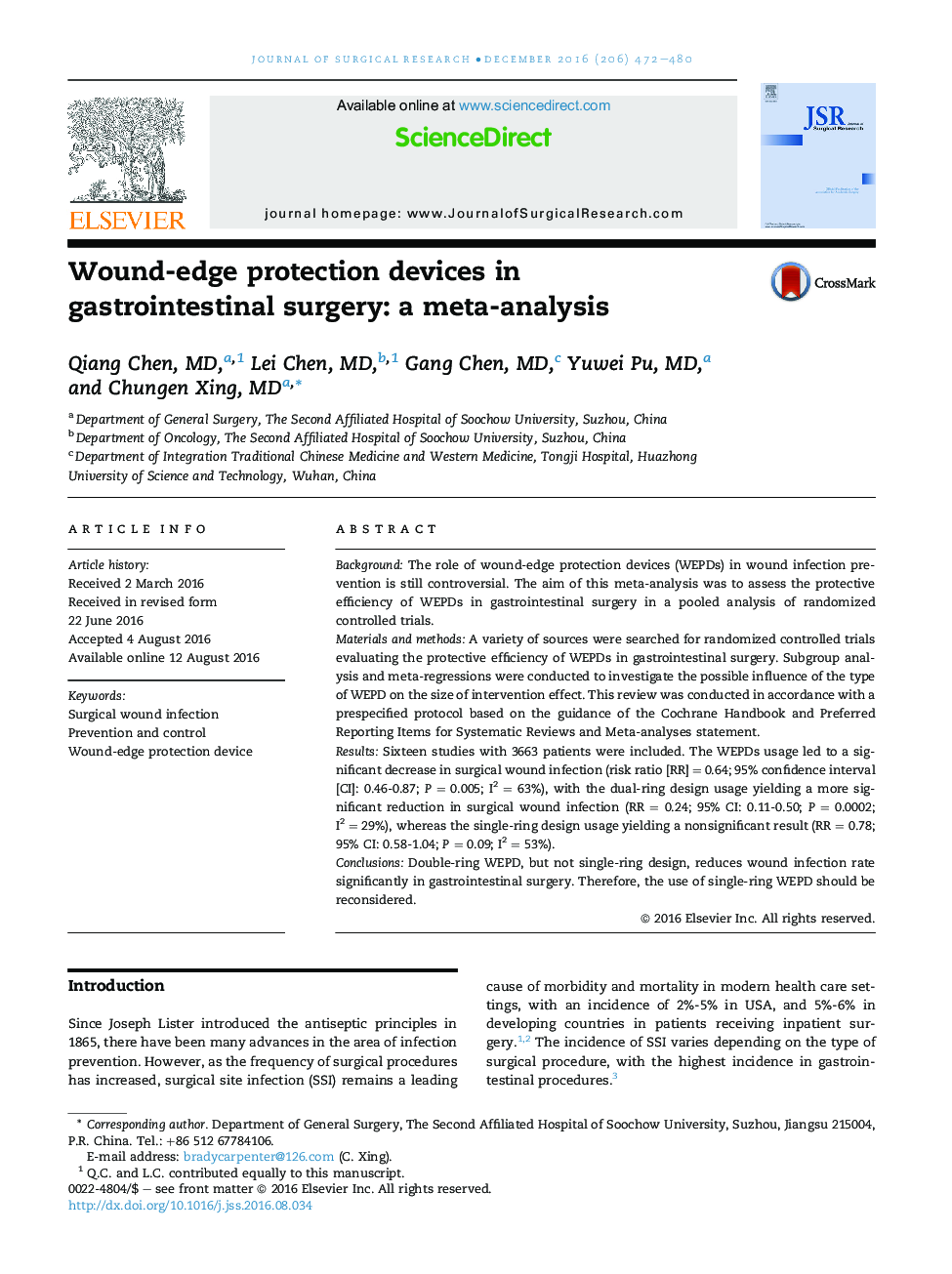| Article ID | Journal | Published Year | Pages | File Type |
|---|---|---|---|---|
| 5733965 | Journal of Surgical Research | 2016 | 9 Pages |
BackgroundThe role of wound-edge protection devices (WEPDs) in wound infection prevention is still controversial. The aim of this meta-analysis was to assess the protective efficiency of WEPDs in gastrointestinal surgery in a pooled analysis of randomized controlled trials.Materials and methodsA variety of sources were searched for randomized controlled trials evaluating the protective efficiency of WEPDs in gastrointestinal surgery. Subgroup analysis and meta-regressions were conducted to investigate the possible influence of the type of WEPD on the size of intervention effect. This review was conducted in accordance with a prespecified protocol based on the guidance of the Cochrane Handbook and Preferred Reporting Items for Systematic Reviews and Meta-analyses statement.ResultsSixteen studies with 3663 patients were included. The WEPDs usage led to a significant decrease in surgical wound infection (risk ratio [RR]Â =Â 0.64; 95% confidence interval [CI]: 0.46-0.87; PÂ =Â 0.005; I2Â =Â 63%), with the dual-ring design usage yielding a more significant reduction in surgical wound infection (RRÂ =Â 0.24; 95% CI: 0.11-0.50; PÂ =Â 0.0002; I2Â =Â 29%), whereas the single-ring design usage yielding a nonsignificant result (RRÂ =Â 0.78; 95% CI: 0.58-1.04; PÂ =Â 0.09; I2Â =Â 53%).ConclusionsDouble-ring WEPD, but not single-ring design, reduces wound infection rate significantly in gastrointestinal surgery. Therefore, the use of single-ring WEPD should be reconsidered.
